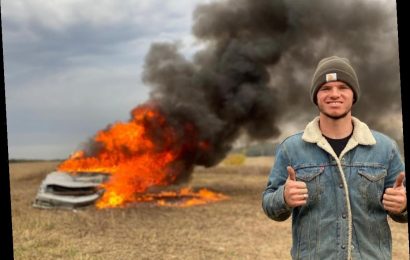After days of drenching downpours and catastrophic flooding unfolded across a large swath of the United States last week, AccuWeather forecasters remain very concerned for a repeat performance from Mother Nature in the coming days.
Last week, torrential rainfall triggered destructive flooding across multiple communities east of the Mississippi River.
Last Tuesday, large portions of the St. Louis metro were under water and hundreds of people had to be rescued after a foot of rain fell in some locations over the course of just 24 hours. The threat shifted east as the week progressed and by Thursday, historic flooding devastated several towns in eastern Kentucky, leaving at least 26 people dead.
These instances of destructive flooding were brought to life as a result of a slow-moving front tracking across central and southern portions of the country. Drenching storms along this slow-moving front were able to exhibit a phenomenon known as training which caused the hardest-hit areas to record colossal rainfall totals.
AccuWeather forecasters warn that a similar atmospheric setup is expected to last into Monday, that can ultimately aggravate flooding concerns in hard-hit communities and create new issues elsewhere.
 |
Drenching storms are forecast to fire up daily through Monday across a more than 800-mile-long corridor of the southern and eastern U.S. Persistent showers and thunderstorms will pop up by the afternoon hours each day and remain active into the overnight.
With this activity, the threat for flooding will encompass large portions of Tennessee, Kentucky, West Virginia, Virginia and North Carolina.
“Due to the recent heavy rains across portions of Kentucky, Tennessee and the Virginias, the soil is incapable of retaining water, resulting in major flash flooding concerns,” AccuWeather Meteorologist Brandon Buckingham explained.
GET THE FREE ACCUWEATHER APP
-
Have the app? Unlock AccuWeather Alerts™ with Premium+
Residents and travelers across the Tennessee Valley will need to stay alert for flooding dangers, as hazardous conditions can develop very quickly. Low-lying areas along small streams and secondary rivers or poor-drainage zones are often the most troublesome spots to be near when torrential rainfall occurs.
Into Sunday night, the focus of the heaviest storms will be on the Tennesse Valley and portions of the Ozark Mountains. The Ozarks were pounded by rainfall to end the week as some locations in Arkansas and Missouri picked up half a foot of rain.
 |
|
36-hour rainfall totals as of Saturday night. |
Sunday night, the core of the heaviest storms will shift and target the central Appalachians and mid-Atlantic.
Areas at the greatest risk for flooding concerns to arise early this week include cities like Nashville and Knoxville, Tennessee; Roanoke, Virginia; and Winston-Salem, North Carolina. Southeastern Kentucky also remains firmly in the danger zone for downpours through Monday.
“While the same extreme rainfall amounts observed in southeast Kentucky a few days ago are not expected through the early week, there can easily be enough rain to hamper cleanup efforts and possibly send rivers back into flood stage,” Buckingham cautioned.
Although flash flooding as a result of heavy rainfall is a serious threat to lives and property, any rainfall that permeates the ground across the Southern and Eastern states helps to alleviate drought concerns.
Saturated soil will also help keep temperatures from skyrocketing across the southeastern quarter of the United States once persistent storminess comes to an end.
“Moist soil will not heat up as much or as quickly as dry soil due to the energy involved in the process of evaporation,” AccuWeather Senior Meteorologist Tyler Roys explained. “This will work to keep temperatures this week at typical summer levels across the Tennessee Valley and surrounding areas, rather than the record-challenging levels forecast to occur farther north.”
Want next-level safety, ad-free? Unlock advanced, hyperlocal severe weather alerts when you subscribe to Premium+ on the AccuWeather app. AccuWeather Alerts™ are prompted by our expert meteorologists who monitor and analyze dangerous weather risks 24/7 to keep you and your family safer.
Source: Read Full Article







